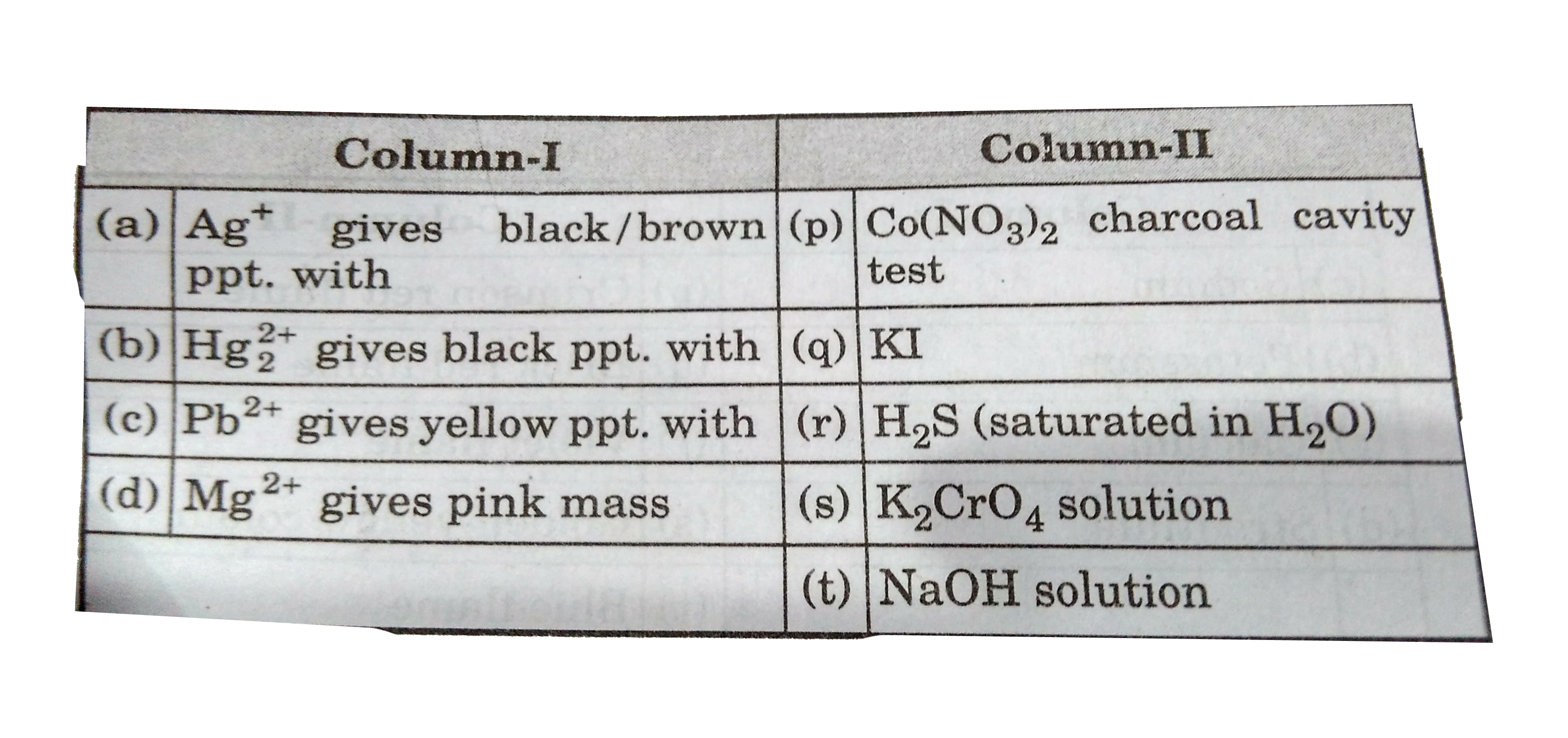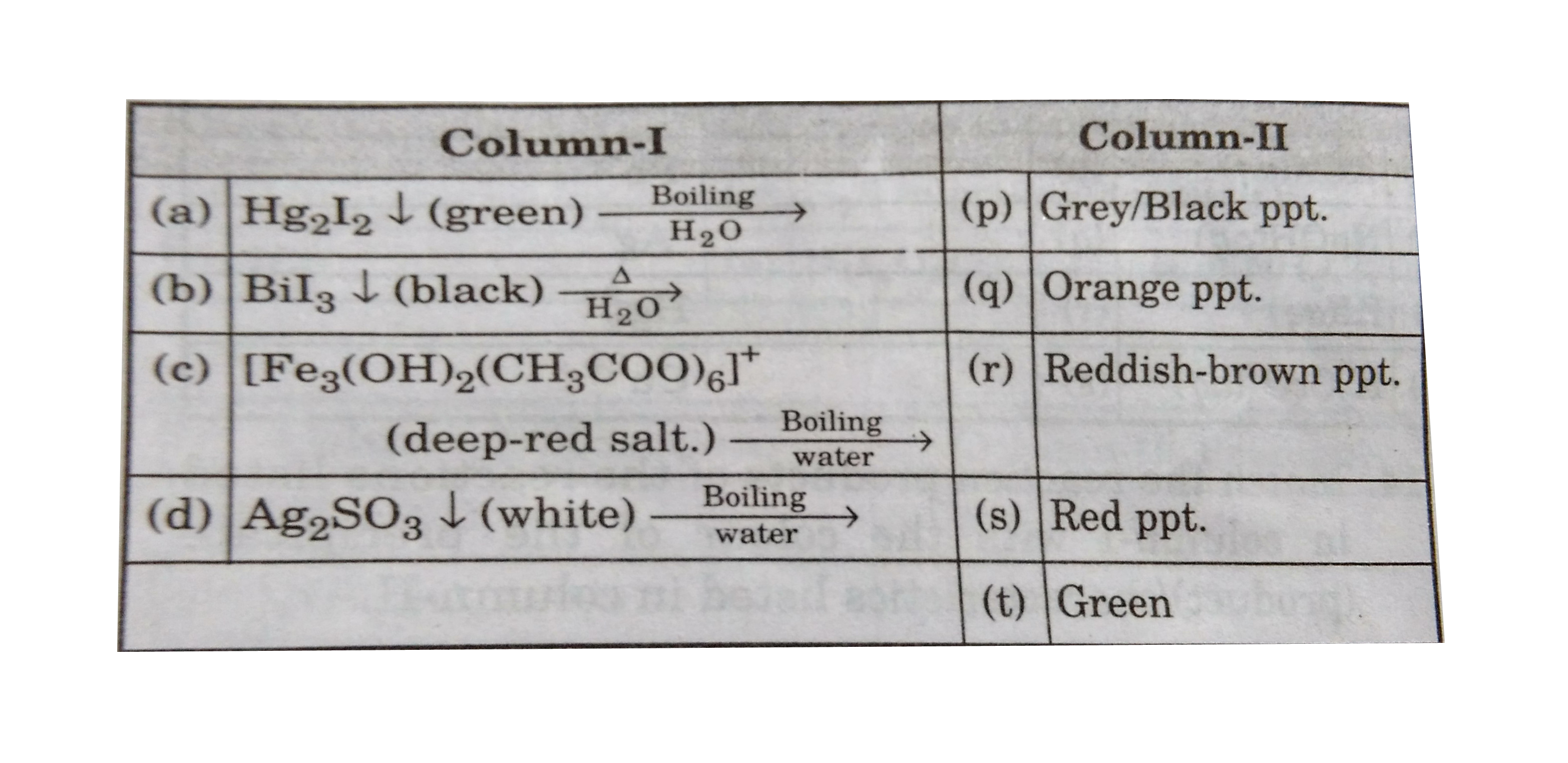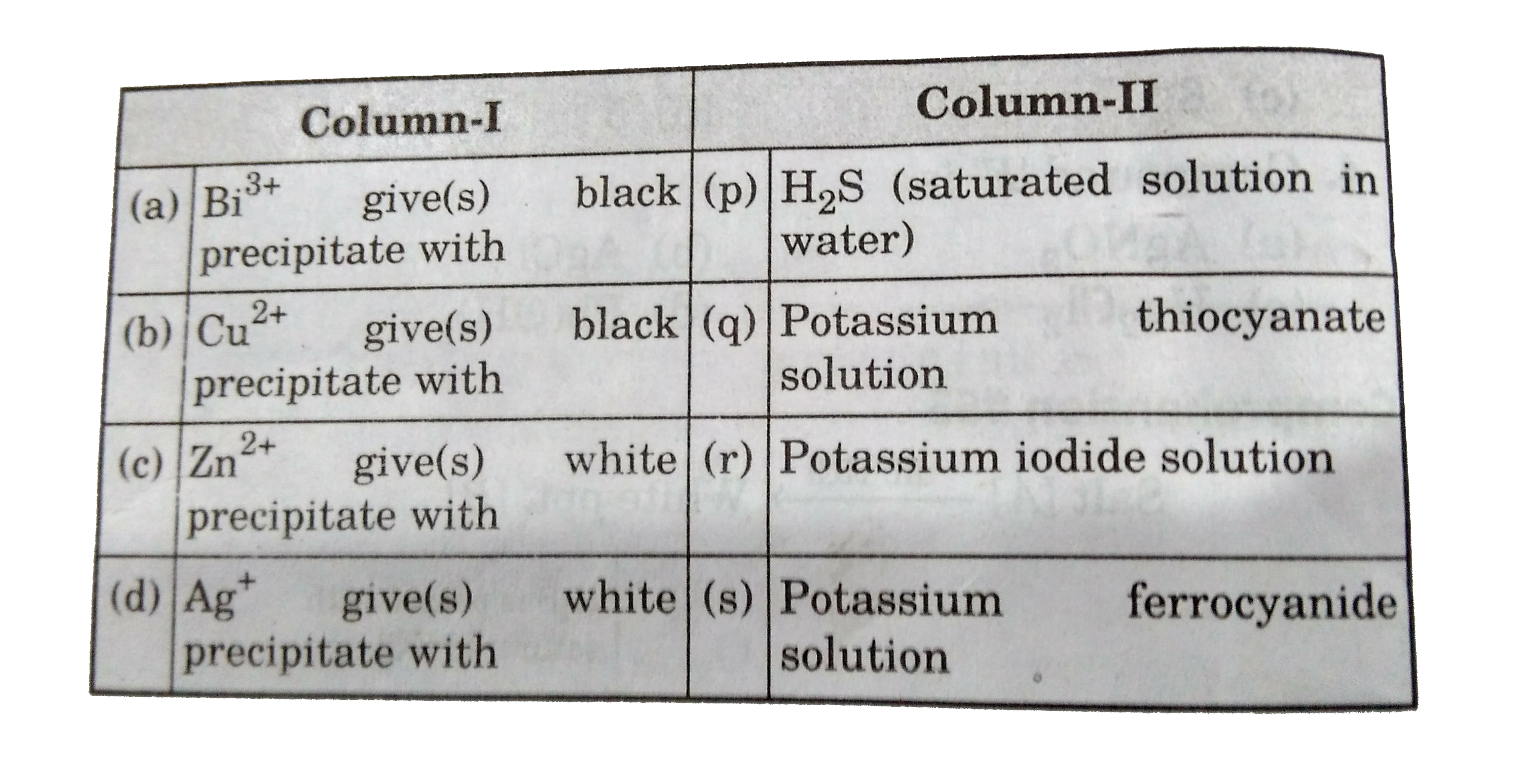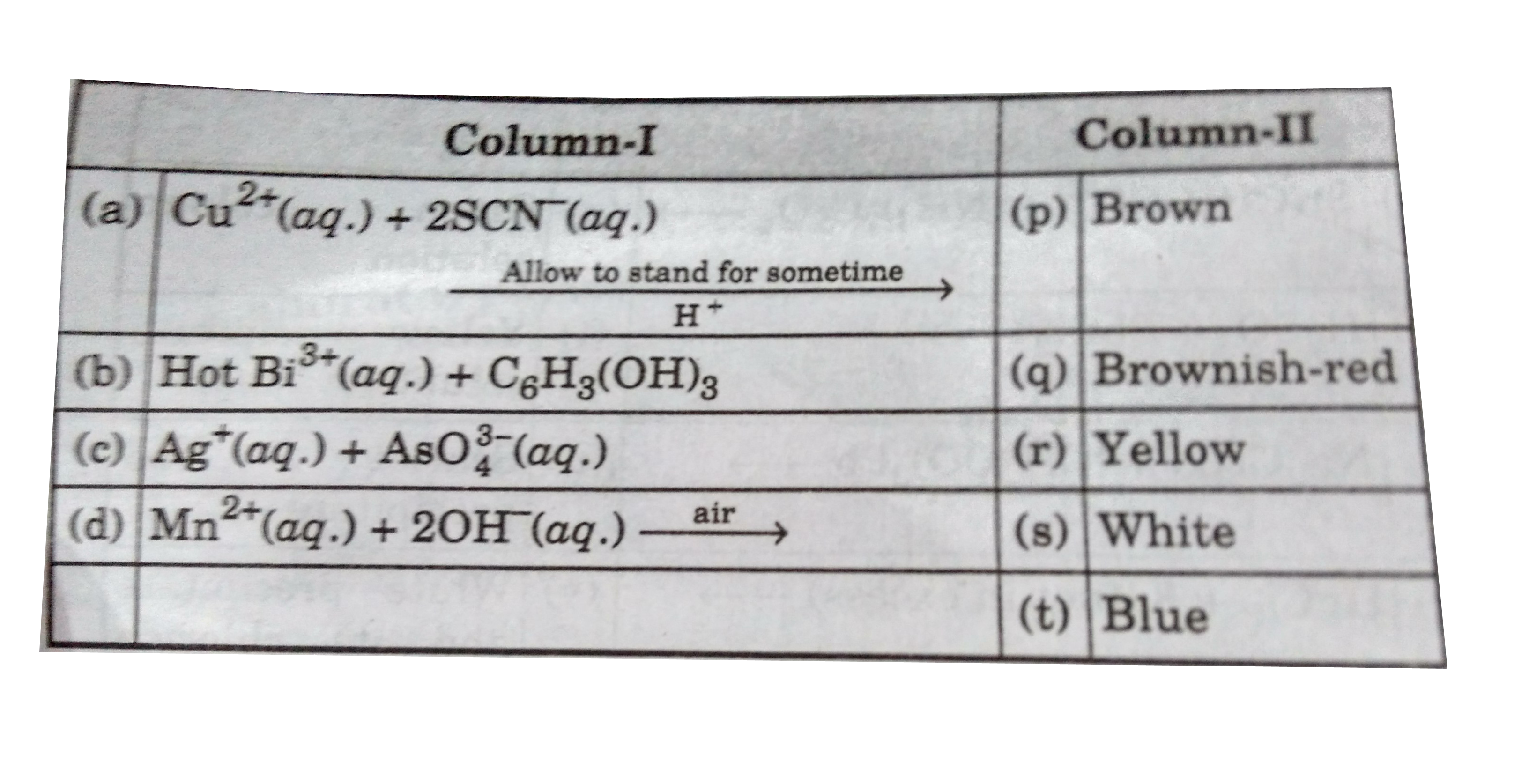Match the precipitate of the compounds listed in (I) with the solvent(s) listed in column(II).
Column−IColumn−II(A)Zn(OH)2precipitate dissolves in(p)Potassium cyanide(B)Cr(OH)3precipitate dissolves in(q)Ammonia(C)AgClprecipitate dissolves in(r)Sodium hydroxide(D)CuSprecipitate dissolves in(s)Sodium peroxide(t)50%HNO3
The correct Answer is:A→q,r,t ; B→r,s,t ; C→p,q ; D→p,s,t
(A)Zn(OH)2⏐⏐↓+4NH3(aq)→[Zn(NH3)4](OH)2 (colourless soluble complex)
Zn(OH)2⏐⏐↓+2NaOH(aq)→Na2[Zn(OH)4] (colourless soluble complex)
Zn(OH)2⏐⏐↓+2H+(aq)→Zn2+(aq)+2H2O(l)
(B)It is slightly soluble in red
Cr(OH)3⏐⏐↓+6NH3(aq)→[Cr(NH3)6]3+(pink or violet soluble complex ) +3OH−(aq)
Cr(OH)3⏐⏐↓+OH−(aq)→[Cr(OH)4]−(green soluble complex)
2Cr(OH)3⏐↓+3Na2O2(s)→2Na2CrO4(yellow solution) + 2NaOH (aq) +2H2O(l)
Cr(OH)3⏐⏐↓+3H+(aq)→Cr3+(aq)+3H2O(l)
(C )AgCl⏐⏐↓+2NH3(aq)→[Ag(NH3)□]Cl(colourless soluble complex)
AgCl⏐⏐↓+2CN−(aq)→[Ag(CN)2]−(colourless soluble complex )+Cl− (aq)
Does not dissolve in NaOH, Na2O2 and 50% HNO3
(D)2CuS⏐⏐↓+8CN−(aq)→2[Cu(CN)4]3− (colourless soluble complex )+S2−2
CuS⏐⏐↓+Na2O2(s)H2O−−→CuSO4(aq)+NaOH(aq)
CuS ↓+ H2O(l)→CuSO4(aq)
3CuS⏐⏐↓+8HNO3(aq)→3Cu2+(aq)+6NO−3(aq)+3S⏐⏐↓+2NO↑⏐⏐+4H2O(l)
Topper's Solved these Questions
Similar Questions
Match the colour of precipitate/residue in column-I with the reagent(s) listed in column-II.

View SolutionMatch the products of the reactions listed in column-I with the colour of the precipitate(s) listed in column-II

View SolutionMatch the colour of the precipitates listed in column-I with the suitable reagent(s) in column-II.

View SolutionMatch the following column of precipitate/mass listed in Column I with the reagent (s) listed in Column II:

View SolutionMatch the following column of precipitate/mass listed in Column I with the reagent (s) listed in Column II:

View SolutionMatch the reactions listed in column-I with the colour of the the reaction precipitates listed in column-II.

View SolutionMatch the colour of precipitate listed in column-I with the reagent(s) listed in column II.
Column−IColumn−II(A)Bi3+gives black precipitate with(p)Saturated solution ofH2Sin water(B)Cu2+gives black precipitate with(q)Potassium thiocyanate soluion(C)Zn2+gives white precipitate with(r)Potassium iodide solution(D)Ag+gives white precipitate with(s)Potassium ferrocyanide solution(t)Potassium chloride
View SolutionMatch the colour of precipitate listed in column-I with the reagent(s) listed in column II.
Column−IColumn−II(A)Bi3+gives black precipitate with(p)Saturated solution of H2S in water(B)Cu2+gives black precipitate with(q)Potassium thiocyanate soluion(C)Zn2+gives white precipitate with(r)Potassium iodide solution(D)Ag+gives white precipitate with(s)Potassium ferrocyanide solution
View SolutionMatch the extraction processes listed in Column I with metals listed in Column II.
Column IColumn II(A)Self reduction(p)Lead(B)Carbon reduction(q)Silver(C)Complex formation and displacement by metal(r)Copper(D)Decomposition of iodide(s)Boron
View SolutionMatch the extraction processes listed in Column I with metals listed in Column II.
Column IColumn II(A)Self reduction(p)Lead(B)Carbon reduction(q)Silver(C)Complex formation and displacement by metal(r)Copper(D)Decomposition of iodide(s)Boron
View Solution
